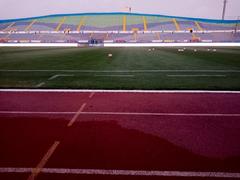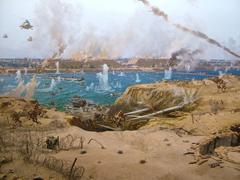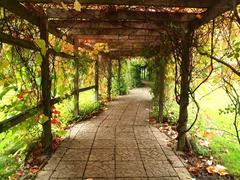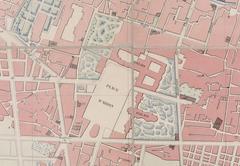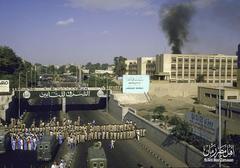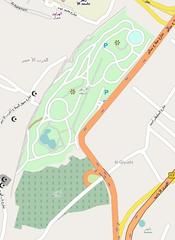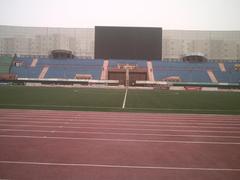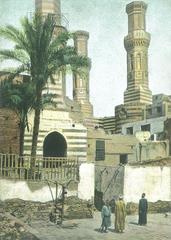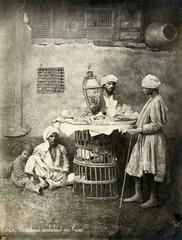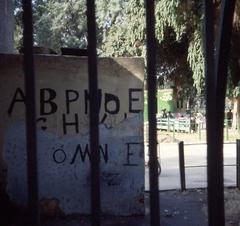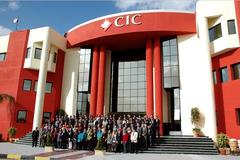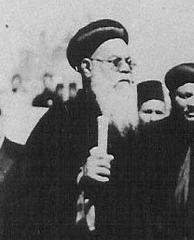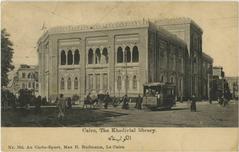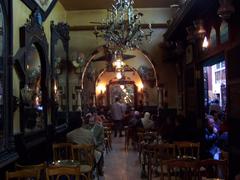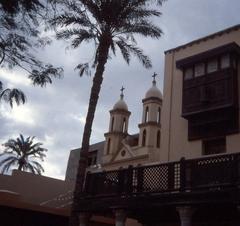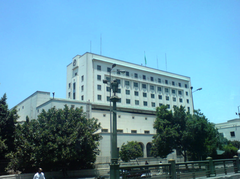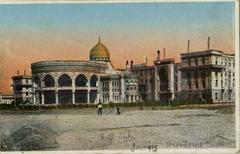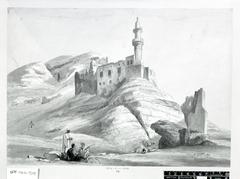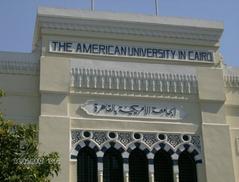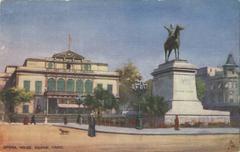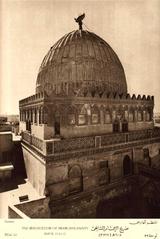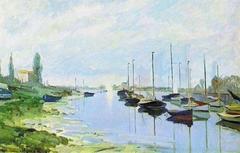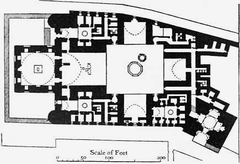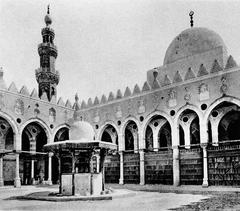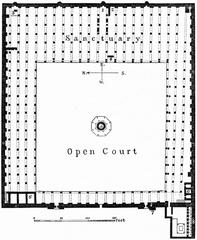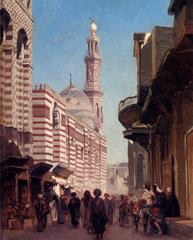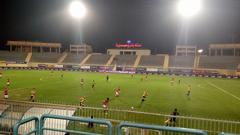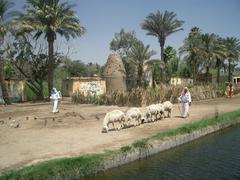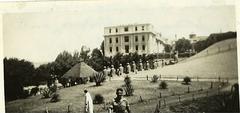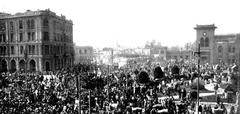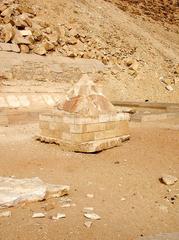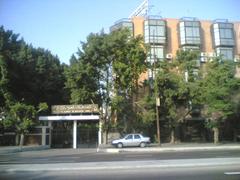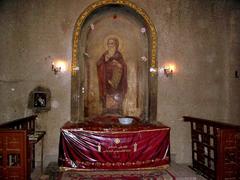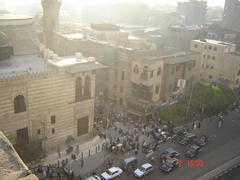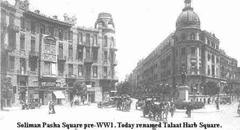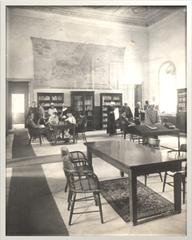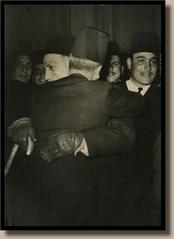Baron Empain Palace: Visiting Hours, Tickets, and Historical Significance in Cairo
Date: 14/06/2025
Introduction
Baron Empain Palace, situated in the historic suburb of Heliopolis in Cairo, is a remarkable symbol of architectural ingenuity and cultural fusion. Built between 1907 and 1911, the palace was the vision of Belgian industrialist Baron Édouard Louis Joseph Empain, who sought to infuse European luxury with Egyptian allure in his newly founded suburb. The palace stands as a testament to Cairo’s cosmopolitan aspirations during the early twentieth century, combining elements of Hindu, Khmer, Islamic, and European architectural styles. Today, following an extensive restoration, it serves as both a museum and a vibrant cultural hub, drawing history enthusiasts and curious travelers alike (Egypt Day Trips, Egypt Tours Plus).
Table of Contents
- Introduction
- Historical Background and Architectural Features
- Architectural Features
- Visitor Information
- Frequently Asked Questions (FAQ)
- Conclusion
- References
Historical Background and Architectural Features
The Visionary Behind the Palace
Baron Empain Palace, also known locally as Qasr Al-Baron or Le Palais Hindou, was commissioned by Baron Édouard Empain, a Belgian engineer and entrepreneur. After his involvement in major infrastructure projects in Europe, Empain arrived in Egypt in the early 1900s, captivated by its mystique. His vision was to create an elegant, modern suburb—Heliopolis—and the palace would be both his residence and a symbol of this cosmopolitan dream (Egypt Tours Portal, Egyptian Streets).
Construction and Early Years
Construction began in 1907, with French architect Alexandre Marcel at the helm, inspired by the temples of Orissa in India and Angkor Wat in Cambodia. The completed palace in 1911 became Empain’s residence and a landmark intended to attract Cairo’s elite to Heliopolis. With its innovative rotating salon and eclectic design, the palace embodied the era’s fascination with technology and mysticism.
After Empain’s death in 1929, the palace changed ownership multiple times and fell into neglect, suffering vandalism and becoming the subject of haunting legends. By the latter half of the 20th century, it stood abandoned until its acquisition by the Egyptian government (Egypt United Tours).
Restoration and Modern Role
Recognizing its significance, the Egyptian government launched a major restoration in 2017. By 2020, extensive conservation efforts had revived the palace’s original splendor, stabilizing its structure, restoring its vibrant facade, and adapting its rooms and rooftop for public exhibitions and events (Egypt Insights, Middle East Eye).
Architectural Features
Exterior and Interior Highlights
- Exterior: The palace’s signature pink-hued facade is adorned with ornate carvings, statues, and bas-reliefs of Hindu deities, elephants, and mythological creatures, crafted by French sculptor Georges-Louis Claude. Its towers and domes echo Hindu temple motifs, with a central dome and minaret-like structures reflecting both Indian and Islamic influences (Encounterstravel).
- Interior: Inside, visitors find grand halls, a sweeping marble staircase, and rooms decorated with mosaics, frescoes, and period furnishings. The original rotating base—intended for the main salon to follow the sun—showcases early 20th-century technological ambition, though it is no longer operational (Your Egypt Tours).
Gardens and Symbolism
The palace is surrounded by landscaped gardens featuring fountains, statues, and lush greenery—a tranquil haven in the midst of bustling Heliopolis (SG Trip). Empain’s fascination with mysticism is evident in the building’s alignment, astrological symbolism, and the inclusion of mythological figures, which have fueled urban legends and stories of hauntings (Egypt Day Trips).
Exhibition Spaces and Layout
Now serving as a museum and cultural venue, the palace hosts exhibitions on the history of Heliopolis, Baron Empain’s life, and the palace’s architecture. The building sits on 4,000 square meters, with multiple floors and a panoramic rooftop accessible for an additional fee (Egypt Tours Portal).
Visitor Information
Visiting Hours
- Regular Hours: Daily from 9:00 AM to 6:00 PM
- Ramadan Hours: 9:00 AM to 3:30 PM
- Note: Hours may vary during public holidays; always confirm before your visit (EgyptaTours).
Ticket Prices
As of 2024 (Ministry of Tourism and Antiquities):
- Foreign Adults: EGP 220
- Foreign Students: EGP 110
- Egyptian Adults: EGP 60
- Egyptian Students: EGP 30
Rooftop Access:
- Foreigners: EGP 120
- Egyptians: EGP 30
Tickets are available at the entrance; cash is preferred, though some locations may accept cards.
Accessibility and Facilities
- Wheelchair Access: The grounds and ground floor are accessible; upper floors and rooftop require stairs. Accessible restrooms are available.
- Restrooms, Gift Shop, Café: Standard amenities provided.
- Security: Standard checks at entry.
Guided Tours and Photography
- Guided Tours: Available in English and Arabic; highly recommended for context and insights (Cairo Top Tours).
- Audio Guides: Occasionally available; inquire at the ticket desk.
- Photography: Non-commercial photography permitted; professional equipment may require authorization.
Travel Tips and Best Times to Visit
- Visit early morning or after 4:00 PM to avoid crowds and heat.
- Weekdays are quieter; weekends in Egypt are Friday and Saturday.
- October to April offers the most pleasant weather.
- Dress modestly (covering shoulders and knees); comfortable shoes are essential.
- Bring water, sunscreen, and a hat.
Nearby Attractions
- Basilica of Notre Dame: Within walking distance; subject of local legends.
- Heliopolis District: Explore colonial-era architecture and local cafés.
- Cairo Tower: For panoramic city views.
- Baron Empain Mosque: Notable Islamic landmark nearby.
- Khan el-Khalili Bazaar: For souvenirs and local cuisine.
Frequently Asked Questions (FAQ)
Q: What are the Baron Empain Palace visiting hours?
A: Generally 9:00 AM to 6:00 PM daily; reduced hours during Ramadan and on public holidays.
Q: How much are tickets?
A: Foreign adults EGP 220, foreign students EGP 110, Egyptians EGP 60, Egyptian students EGP 30; rooftop access is extra.
Q: Is the palace wheelchair accessible?
A: The grounds and ground floor are accessible; upper levels require stairs.
Q: Are guided tours available?
A: Yes, in English and Arabic.
Q: Can I take photos inside?
A: Non-commercial photography is allowed; professional equipment may need special permission.
Conclusion
Baron Empain Palace is a testament to Cairo’s cosmopolitan history and architectural richness. Its unique design, storied past, and successful restoration make it a must-visit for anyone interested in Egypt’s heritage. Plan your visit by checking current hours and ticket rates, and consider combining your trip with other nearby attractions for a comprehensive cultural experience. For real-time updates, guided tours, and exclusive content, download the Audiala app and follow official channels for upcoming events at this remarkable site.
